Have you ever noticed a sticky, black substance covering your plants in the garden? It could be sooty mold, a type of fungal disease that can affect various plants, from trees to shrubs. But what exactly is sooty mold, and how can you identify, prevent, and treat it?
Table of Contents
ToggleKey Takeaways:
Sooty Mold in Gardens is a fungal disease caused by fungi that grow on honeydew secreted by sap-sucking insects.
- Identifying sooty mold can be done by looking for a black or dark gray coating on leaves, twigs, and stems, often accompanied by the presence of honeydew-producing pests.
- Preventing sooty mold involves controlling honeydew-producing pests, encouraging natural predators, practicing proper irrigation, and regular fertilization.
- Treating sooty mold includes removing honeydew-producing pests, washing off the mold with water or soapy solutions, and considering treatment options if the plant’s health is declining.
- While sooty mold can be unsightly, it is primarily an aesthetic problem that can be managed effectively by following these steps.
What Causes Sooty Mold in Gardens?
Sooty mold in gardens is primarily caused by honeydew-producing pests and sap-sucking insects. These tiny creatures, including aphids, scales, leafhoppers, and whiteflies, feed on plant sap and excrete a sticky, sugary substance known as honeydew. As the insects feed, they release honeydew onto the leaves, stems, and other surfaces of plants.
When honeydew accumulates on plants, it provides an ideal environment for the growth of sooty mold fungi. The spores of these fungi are carried by wind and water until they land on surfaces coated with honeydew. Once the spores germinate, they produce a black mycelium that forms the dark, sooty appearance associated with this mold.
To prevent the growth of sooty mold, it is important to control the honeydew-producing pests in your garden. By managing populations of aphids, scales, leafhoppers, and whiteflies, you can significantly reduce the presence of honeydew and subsequently prevent the growth of sooty mold.
Controlling these pests can be achieved through a combination of natural predators, manual removal, and appropriate insecticidal treatments. For example, introducing beneficial insects like ladybugs and parasitic wasps can help control aphids and other offending pests naturally. Regularly inspecting plants for signs of infestation and manually removing the insects when found can also be effective.
In cases where populations are difficult to manage manually, the use of insecticidal soaps or targeted insecticides may be necessary. However, it is important to carefully follow label instructions and consider using organic or environmentally friendly options whenever possible.
Impact of Honeydew-Producing Pests on Sooty Mold
“Honeydew-producing pests play a significant role in the development of sooty mold in gardens. By addressing the root cause and effectively managing these insects, you can prevent the growth and spread of sooty mold and maintain the health and appearance of your plants.”
To summarize, honeydew-producing pests like aphids, scales, leafhoppers, and whiteflies are responsible for causing sooty mold in gardens. By controlling these pests through natural predators and targeted treatments, you can prevent the growth of sooty mold and keep your garden looking healthy and beautiful.
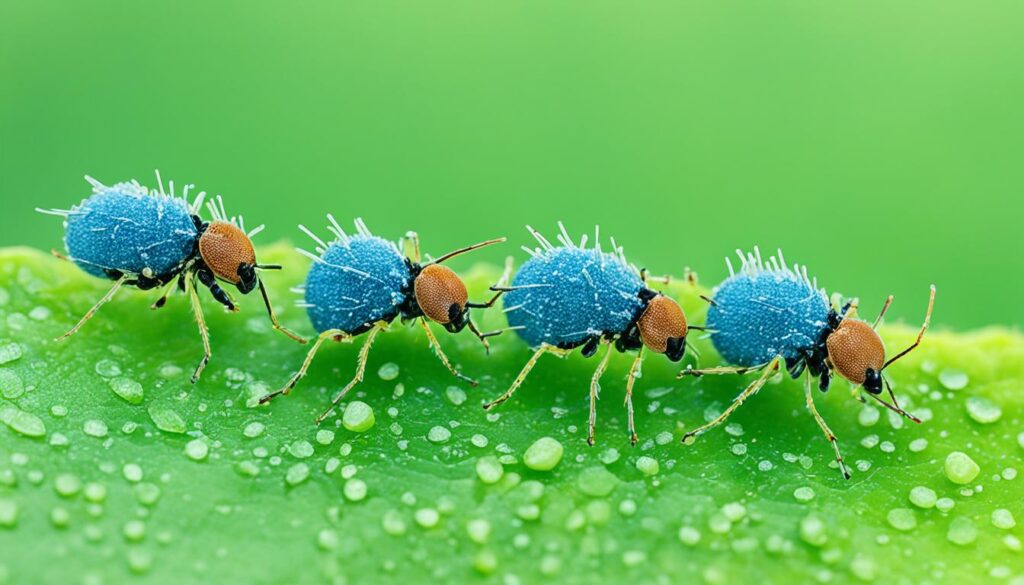
Identifying Sooty Mold in the Garden
Sooty mold in gardens can be easily identified by its distinctive black or dark gray coating on the leaves, twigs, and stems of affected plants. The mold appears as small dots that may gradually spread and cover larger sections of leaves. Alongside the mold, you might also notice the presence of honeydew-producing pests such as aphids, scales, and whiteflies.
A quick way to confirm the presence of sooty mold is by touch. If you run your fingers over the affected leaves, you may feel a slight stickiness caused by the honeydew secreted by the pests. These visual and tactile cues can help you accurately identify sooty mold in your garden.
“The black coating that develops on the leaves is a clear sign of sooty mold. It’s important to address this issue promptly to prevent further damage to your plants.” – [Gardening Expert Name]
Visual Indicators of Sooty Mold
When identifying sooty mold, look for the following visual indicators:
- Black or dark gray coating on leaves, twigs, and stems
- Dots or specks of mold that may merge and cover larger areas of leaves
- Honeydew-producing pests like aphids, scales, and whiteflies
By recognizing these signs, you can take the necessary steps to address sooty mold and improve the health of your garden.
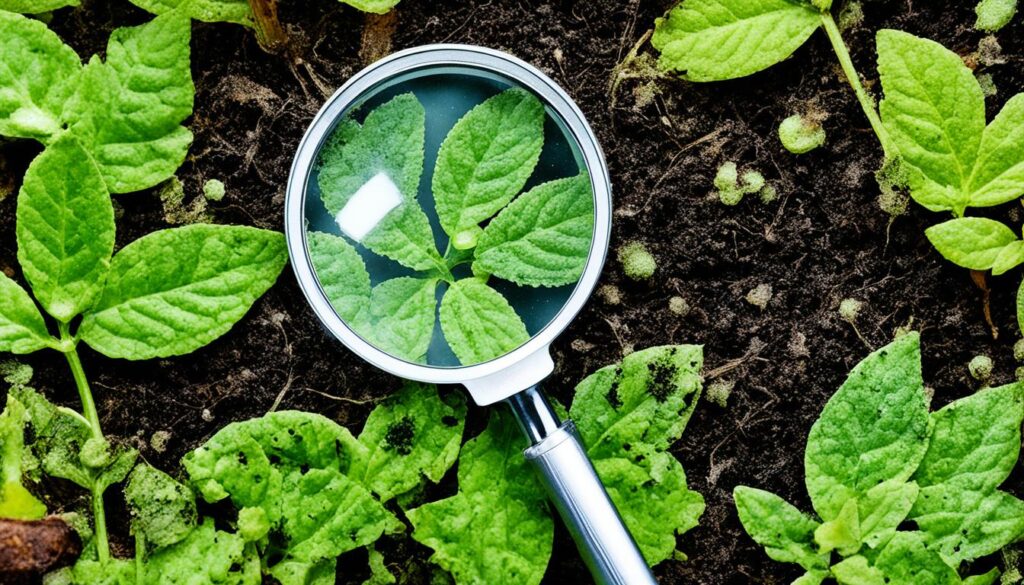
| Visual Indicators of Sooty Mold | Presence of Honeydew-Producing Pests |
|---|---|
| A black or dark gray coating on leaves, twigs, and stems | Aphids |
| Small dots or specks that may merge and cover larger areas | Scales |
| – | Whiteflies |
Preventing Sooty Mold in the Garden
The key to preventing sooty mold in the garden is to control the honeydew-producing pests that attract the mold. By implementing these preventive measures, you can maintain a healthy garden free from the unsightly effects of sooty mold.
Encourage Natural Predators
To control honeydew-producing pests, it’s essential to encourage the presence of natural predators in your garden. Ladybugs and parasitic wasps are effective in reducing populations of aphids, scales, and whiteflies. By planting diverse habitats with native plants, you can attract these beneficial insects to your garden, creating a balanced ecosystem that naturally keeps pest populations in check.
Avoid Broad-Spectrum Pesticides
When dealing with garden pests, it’s crucial to avoid the use of broad-spectrum pesticides. These chemicals not only harm the pests but also kill beneficial predators, disrupting the natural balance and potentially leading to an increase in sooty mold. Instead, opt for targeted pest control methods that specifically target the honeydew-producing pests while sparing beneficial insects.
Proper Irrigation
Proper irrigation plays a significant role in preventing sooty mold. Drought-stressed plants are more susceptible to pest infestations, attracting honeydew-producing insects and creating favorable conditions for sooty mold growth. Make sure to water your plants adequately, ensuring they receive the right amount of moisture without becoming overly saturated.
Regular Fertilization
Regular fertilization is essential for maintaining plant health and enhancing their resistance to pests and diseases, including sooty mold. By providing plants with the necessary nutrients, you can help them grow vigorously and develop a robust defense system. Consult with a local horticulturist or follow recommended fertilization guidelines for your specific plants to ensure proper nourishment.
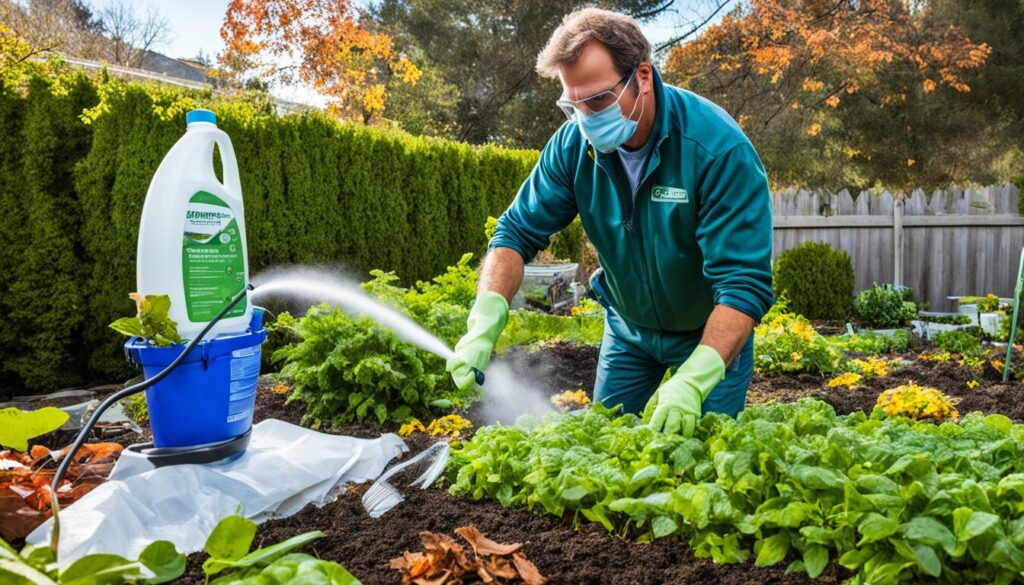
Incorporating these preventive measures into your gardening routine will significantly reduce the risk of sooty mold in your garden. By encouraging natural predators, avoiding broad-spectrum pesticides, practicing proper irrigation, and regular fertilization, you can maintain a healthy and mold-free garden.
Treating Sooty Mold in the Garden
If you have already identified sooty mold in your garden, treatment involves removing the honeydew-producing pests that attract the mold. You can do this by spraying the pests off with water or using natural products like neem oil or insecticidal soap. It is important to target the affected areas and repeat the treatment if necessary. Additionally, you can wash off the mold itself with a strong stream of water or by wiping it off with a soapy rag. Remember to treat the underlying pest problem to prevent the recurrence of sooty mold.
Effective Treatment Methods for Sooty Mold
When it comes to treating sooty mold in your garden, there are several effective methods to consider:
- 1. Remove honeydew-producing pests: Use water spray or natural products like neem oil or insecticidal soap to eliminate the pests.
- 2. Apply insecticidal soap: Insecticidal soap can be sprayed directly on the affected areas to kill the pests and remove their honeydew.
- 3. Wash off the mold: Use a strong stream of water or a soapy rag to wash off the sooty mold from your plants.
By combining these treatment methods, you can effectively address the issue of sooty mold and prevent its recurrence in your garden.
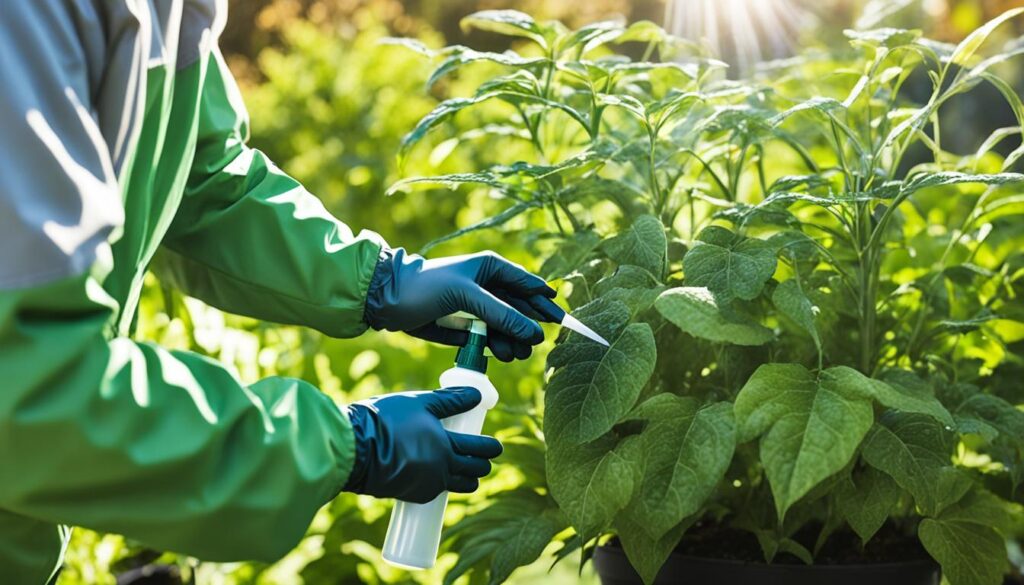
Preventing Sooty Mold Through Integrated Pest Management
While treating sooty mold is essential, preventing its occurrence is equally important. Integrated Pest Management (IPM) strategies can help minimize the risk of sooty mold in your garden:
- Monitor for pests: Regularly inspect your plants for signs of honeydew-producing pests and take immediate action if detected.
- Promote natural predators: Encourage beneficial insects like ladybugs and lacewings that prey on honeydew-producing pests to keep their populations in check.
- Prune infected branches: Remove heavily infested branches to prevent the spread of sooty mold to healthy parts of the plant.
By following these preventive measures and implementing effective treatment methods, you can maintain a healthy and mold-free garden.
Cleaning Up Sooty Mold on Surfaces
Sooty mold not only affects plants but can also find its way onto various surfaces that come into contact with honeydew, such as outdoor furniture, swing sets, and grills. To effectively clean these surfaces and remove the sooty mold, you can prepare a simple cleaning solution using readily available household items. Here’s a recipe for a cleaning solution that can help tackle the problem:
Note: It is crucial to wear rubber gloves when using this solution and avoid applying it directly to plants.
| Ingredients | Amount |
|---|---|
| Powdered household detergent | 1 cup |
| Household liquid bleach | 1/2 cup |
| Trisodium phosphate | 1/4 cup |
| Water | 2 gallons |
To clean the surfaces affected by sooty mold, follow these steps:
- Put on rubber gloves to protect your hands.
- In a bucket, mix 1 cup of powdered household detergent, 1/2 cup of household liquid bleach, and 1/4 cup of trisodium phosphate with 2 gallons of water. Stir well to ensure the ingredients are properly blended.
- Dip a scrub brush or sponge into the cleaning solution.
- Gently scrub the affected surfaces, applying moderate pressure, to remove the sooty mold.
- Rinse the cleaned surfaces thoroughly with water to remove any residue from the cleaning solution.
By using this cleaning solution and following the steps outlined above, you can effectively remove sooty mold from surfaces, restoring their cleanliness and appearance.

The Aesthetic Impact of Sooty Mold
While sooty mold can affect the aesthetics of the garden, it is primarily an aesthetic problem rather than a serious issue. Severe cases of sooty mold can harm plants by blocking sunlight and causing leaf drop, but a few splotchy leaves are usually not a cause for concern. Fruits or vegetables that become covered with sooty mold are still edible and can be washed off with mild soap and warm water. If the sight of black leaves is bothersome or if the overall health of the plant is declining, treatment options can be considered.
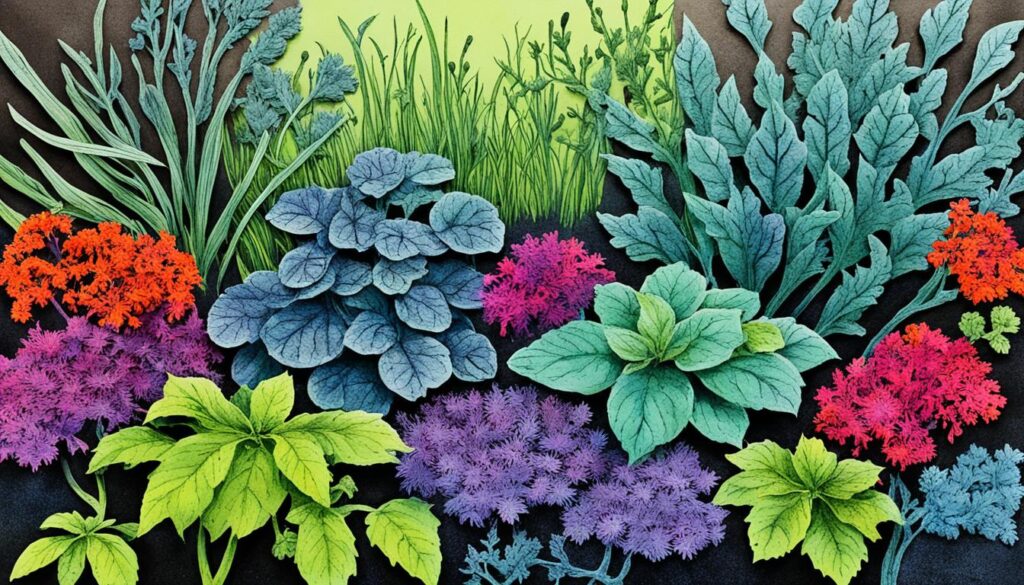
Comparison of Sooty Mold’s Aesthetic Impact and Plant Damage
| Aesthetic Impact | Plant Damage | |
|---|---|---|
| Severity | Primarily affects aesthetics | Severe cases can harm plants by blocking sunlight and causing leaf drop |
| Eatability of Fruits/Vegetables | Fruits or vegetables covered with sooty mold are still edible | N/A |
| Treatment Options | Frequent cleaning and treatment can minimize aesthetic impact | Treatment may be necessary if plant health is declining |
Conclusion
In conclusion, sooty mold is a common fungal disease that can impact the beauty of your garden. It is caused by fungi that grow on honeydew secreted by sap-sucking insects like aphids, scales, and whiteflies. Identifying sooty mold is easy, as it is characterized by a black coating on leaves and stems, often accompanied by the presence of honeydew-producing pests.
Preventing sooty mold involves controlling these pests by encouraging natural predators, maintaining proper irrigation, and regular fertilization. By creating a diverse habitat with native plants, you can attract beneficial insects like ladybugs and parasitic wasps that prey on these pests. Additionally, ensuring that your plants receive adequate moisture and nutrition will help protect them from infestations.
If you already have sooty mold in your garden, treatment involves removing the honeydew-producing pests and cleaning off the mold. You can do this by spraying the pests off with water or using natural pest control products. Washing off the mold with water or a mild soapy solution will help restore the beauty of your plants. Remember to address the underlying pest problem to prevent the recurrence of sooty mold.
While sooty mold can be unsightly, it is primarily an aesthetic issue and does not generally cause significant harm to the health of your plants. By following these steps to identify, prevent, and treat sooty mold, you can keep your garden looking beautiful and thriving. Take action today to protect your plants and maintain a visually appealing outdoor space.
FAQ
What is sooty mold in the garden?
Sooty mold is a fungal disease that appears as a black or dark gray coating on plant leaves, twigs, and stems. It is caused by fungi that grow on honeydew secreted by sap-sucking insects.
What causes sooty mold in gardens?
Sooty mold is caused by honeydew-producing pests such as aphids, scales, leafhoppers, and whiteflies. These insects feed on plant sap and excrete excess sugars in the form of honeydew, which attracts the mold fungi.
How can I identify sooty mold in the garden?
Sooty mold is characterized by a black or dark gray coating on leaves, twigs, and stems. It often appears as small dots that can eventually cover large sections of leaves. You may also notice the presence of honeydew-producing pests like aphids, scales, and whiteflies.
How can I prevent sooty mold in the garden?
To prevent sooty mold, it is important to control honeydew-producing pests. This can be done by encouraging natural predators, practicing proper irrigation, and regular fertilization.
What are the treatment options for sooty mold in the garden?
To treat sooty mold, you need to remove the honeydew-producing pests and clean off the mold. This can be done by spraying pests off with water, using natural products like neem oil or insecticidal soap, and washing off the mold with water or soapy solutions.
How can I clean up sooty mold on surfaces affected by honeydew?
To clean surfaces affected by sooty mold, you can use a cleaning solution consisting of powdered household detergent, household liquid bleach, trisodium phosphate, and water. Scrubbing affected surfaces with this solution can help remove the mold.
What is the aesthetic impact of sooty mold in the garden?
Sooty mold can be unsightly and cover plant surfaces, but it is primarily an aesthetic problem. While severe cases can harm plants by blocking sunlight and causing leaf drop, a few black leaves or fruits covered in sooty mold are usually not a cause for concern.





